‘Our goal is just to defend our own rights and autonomy,’ says man behind the iconic bloodstained bauhinia flag that became the symbol of the 2019 Hong Kong protests
Weekends have been 48-hour marathons for the university student and his team of several hundred. Many of whom he has never met.
Once all the hard-hatted, goggled, face-masked, black-clad Hongkongers go home at the end of a long day’s protesting, Y and his network of illustrators and designers take stock and get to work.
“We knew we had an uphill battle against the government and police,” says Y.
Once all the hard-hatted, goggled, face-masked, black-clad Hongkongers go home at the end of a long day’s protesting, Y and his network of illustrators and designers take stock and get to work.
“We knew we had an uphill battle against the government and police,” says Y.
“They have a [PR] apparatus, far more resources and power to shape the discourse. We can only overpower them by sheer numbers and creativity.”
More than 5,000 members of a secret group brainstorm on the Telegram messaging app, then a team of more than 200 designers go to work translating the concepts they come up with into the sharp, subversive visuals that have come to define Hong Kong’s summer of unrest and dissent.
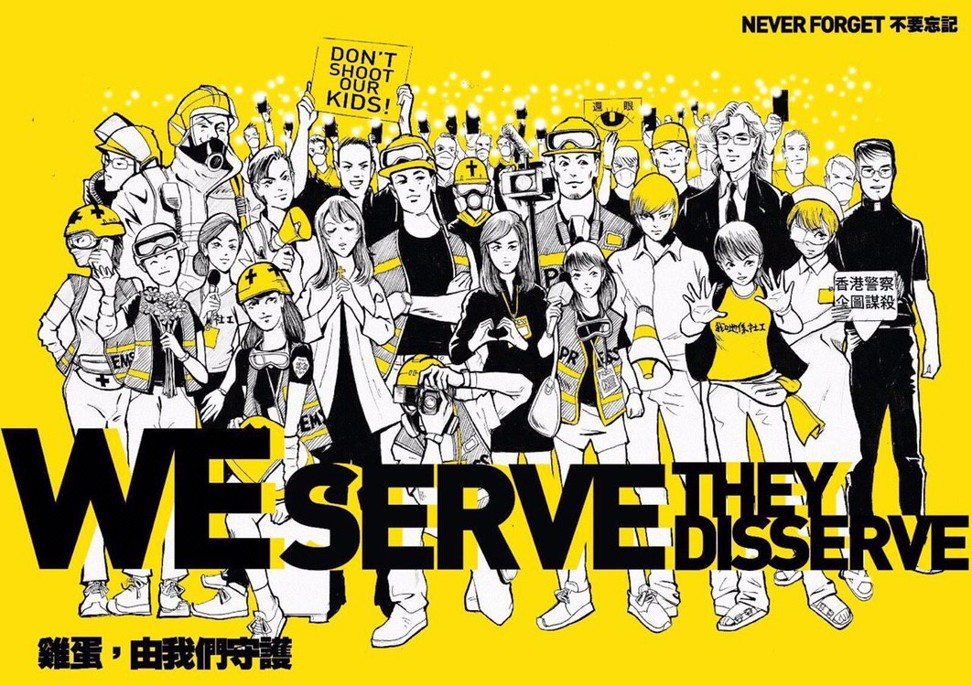
One of the many protest posters seen in Hong Kong.
Then there’s also the matter of telling protesters where the protests are.
“Before each event, we produce posters that offer basic information, customising them to different districts and industries,” says Y.
More than 5,000 members of a secret group brainstorm on the Telegram messaging app, then a team of more than 200 designers go to work translating the concepts they come up with into the sharp, subversive visuals that have come to define Hong Kong’s summer of unrest and dissent.

One of the many protest posters seen in Hong Kong.
Then there’s also the matter of telling protesters where the protests are.
“Before each event, we produce posters that offer basic information, customising them to different districts and industries,” says Y.
“We have to digest a lot of information and condense it into visuals. We even study what pro-government media is and is not reporting, to make sure we fill that void and keep people informed.”
And pro-government forces have been busy, too, creating their own sets of political cartoons that portray protesters as insolent and unappreciative, and in one case, as cockroaches.
And pro-government forces have been busy, too, creating their own sets of political cartoons that portray protesters as insolent and unappreciative, and in one case, as cockroaches.
Pro-China/pro-police groups have also used visuals to advertise their semi-frequent blue-shirt marches.
Few back in June could have imagined the powerful role the image would come to play in defining and mobilising ideological battles ahead.
On July 1, Hong Kong’s leader and government officials sipped champagne to celebrate the 22nd anniversary of the handover, in Wan Chai’s heavily policed and barricaded Convention and Exhibition Centre.
On July 1, Hong Kong’s leader and government officials sipped champagne to celebrate the 22nd anniversary of the handover, in Wan Chai’s heavily policed and barricaded Convention and Exhibition Centre.
Just 200 metres away, a black flag with a withering, bloodstained “bauhinia” waved outside the Legislative Council.
This now-iconic flag was one of Y’s first works.
This now-iconic flag was one of Y’s first works.
To avoid breaching the Regional Flag and Regional Emblem Ordinance, which prohibits desecration of the flag, he sought legal counsel to ensure the flower differed sufficiently from that of the official Hong Kong flag.
The simple design started to flutter on social-media profile pictures and from actual flagpoles, and became the sigil of protests over the Hong Kong summer.
The simple design started to flutter on social-media profile pictures and from actual flagpoles, and became the sigil of protests over the Hong Kong summer.
And every step of the way, the unnamed protest-art collective has been drawing on a range of global pop-culture references, Cantonese slang and jibes at mainland culture and tradition for further inspiration.
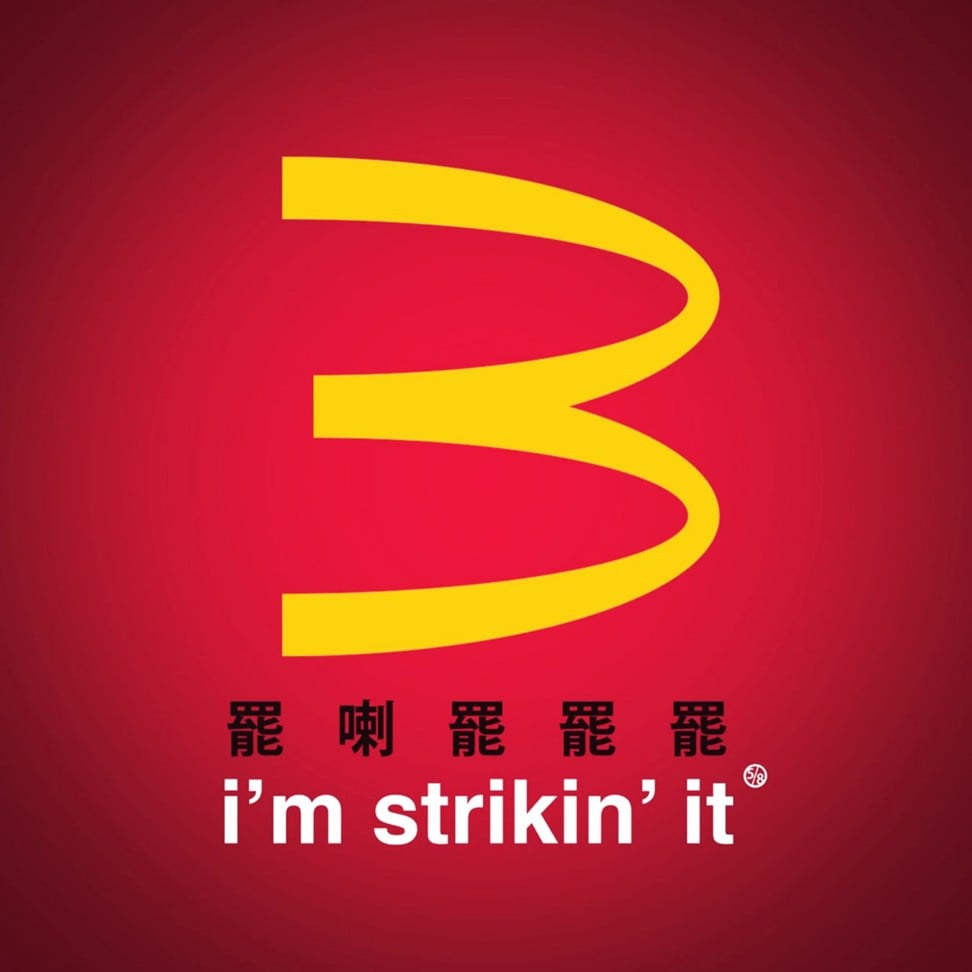
One poster advertising a citywide strike makes clever use of McDonald’s advertising jingle, the ‘ba’ of which sounds the same as ‘strike’ in Cantonese.
On August 6, hours after police officers arrested Keith Fong Chung-yin, president of Baptist University’s student union, for possessing laser pointers – characterised as “offensive weapons” – Star Wars-themed visuals heavy on the lightsabres surfaced online. (And yes, someone did bring a toy Jedi weapon to the subsequent demonstration.)
In anticipation of the Hungry Ghost Festival, on August 15, during which Chinese honour the dead with burnt offerings and “hell money”, a demonstration was held in Sham Shui Po.

One poster advertising a citywide strike makes clever use of McDonald’s advertising jingle, the ‘ba’ of which sounds the same as ‘strike’ in Cantonese.
On August 6, hours after police officers arrested Keith Fong Chung-yin, president of Baptist University’s student union, for possessing laser pointers – characterised as “offensive weapons” – Star Wars-themed visuals heavy on the lightsabres surfaced online. (And yes, someone did bring a toy Jedi weapon to the subsequent demonstration.)
In anticipation of the Hungry Ghost Festival, on August 15, during which Chinese honour the dead with burnt offerings and “hell money”, a demonstration was held in Sham Shui Po.
Y’s team designed joss-paper hell-money banknotes portraying caricatures of officials, including Chief Executive Carrie Lam Cheng Yuet-ngor, Commissioner of Police Stephen Lo Wai-chung, Legco President Andrew Leung Kwan-yuen and Secretary for Justice Teresa Cheng Yeuk-wah.
The message?
Go to hell.
An almost endless array of protest poster art has been taped to “Lennon Walls” in every district from Happy Valley to Tai Po, and supporters also transmit images, digitally, to nearby strangers with iPhones via Airdrop.
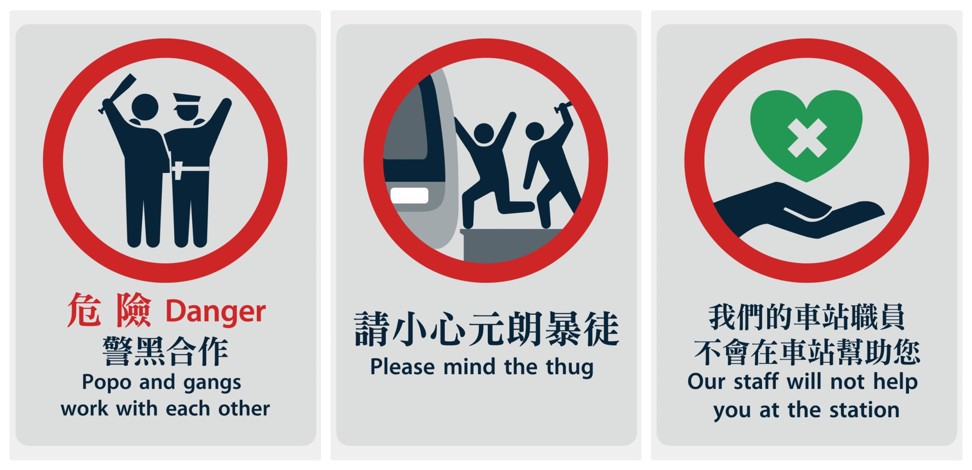
Protests posters riff on those seen in MTR stations.
Y chuckles at how this particular form of Hong Kong “mo lei tau” humour “has become our only source of laughter in the face of such adversity”.
An almost endless array of protest poster art has been taped to “Lennon Walls” in every district from Happy Valley to Tai Po, and supporters also transmit images, digitally, to nearby strangers with iPhones via Airdrop.

Protests posters riff on those seen in MTR stations.
Y chuckles at how this particular form of Hong Kong “mo lei tau” humour “has become our only source of laughter in the face of such adversity”.
For Y, attempts to discredit the anti-government movement shows it has struck a nerve.
“Chinese authorities don’t care about the economic loss. Their concern is that our message of democracy and freedom may reach Chinese tourists, changing their values and minds, and taking that back to China,” says Y.
“Chinese authorities don’t care about the economic loss. Their concern is that our message of democracy and freedom may reach Chinese tourists, changing their values and minds, and taking that back to China,” says Y.
“But our goal isn’t to challenge the Communist Party, just to defend our own rights and autonomy as guaranteed by ‘one country, two systems’.”
September is supposed to herald the start of the academic year but Y, like many of his peers, is considering a deferral.
September is supposed to herald the start of the academic year but Y, like many of his peers, is considering a deferral.
Talk is of Hong Kong having passed a point of no return and he says that life cannot return to the way it was before.
Many members of his team have suffered panic and anxiety attacks but their work, says Y, must continue.
“For many of us, our commitment to our society, to this movement, has taken priority over our time, health, studies and work – even our lives.”
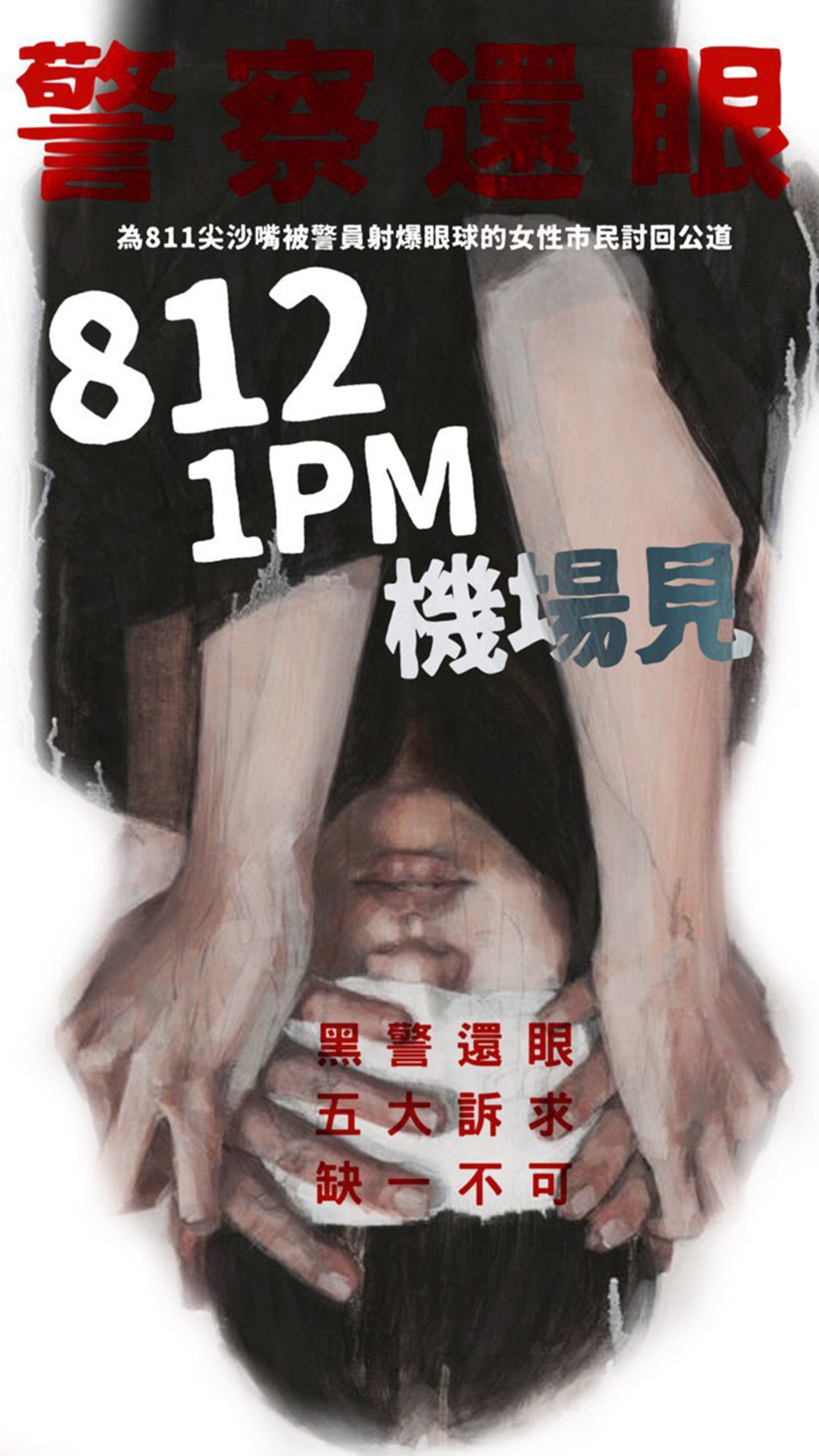
A poster advertises a rally at the airport, after a female protester was seriously injured after being hit in the eye by a police beanbag round.

Illustrator Katrina’s take on the view that it’s OK to protest, but only if you don’t disturb others.
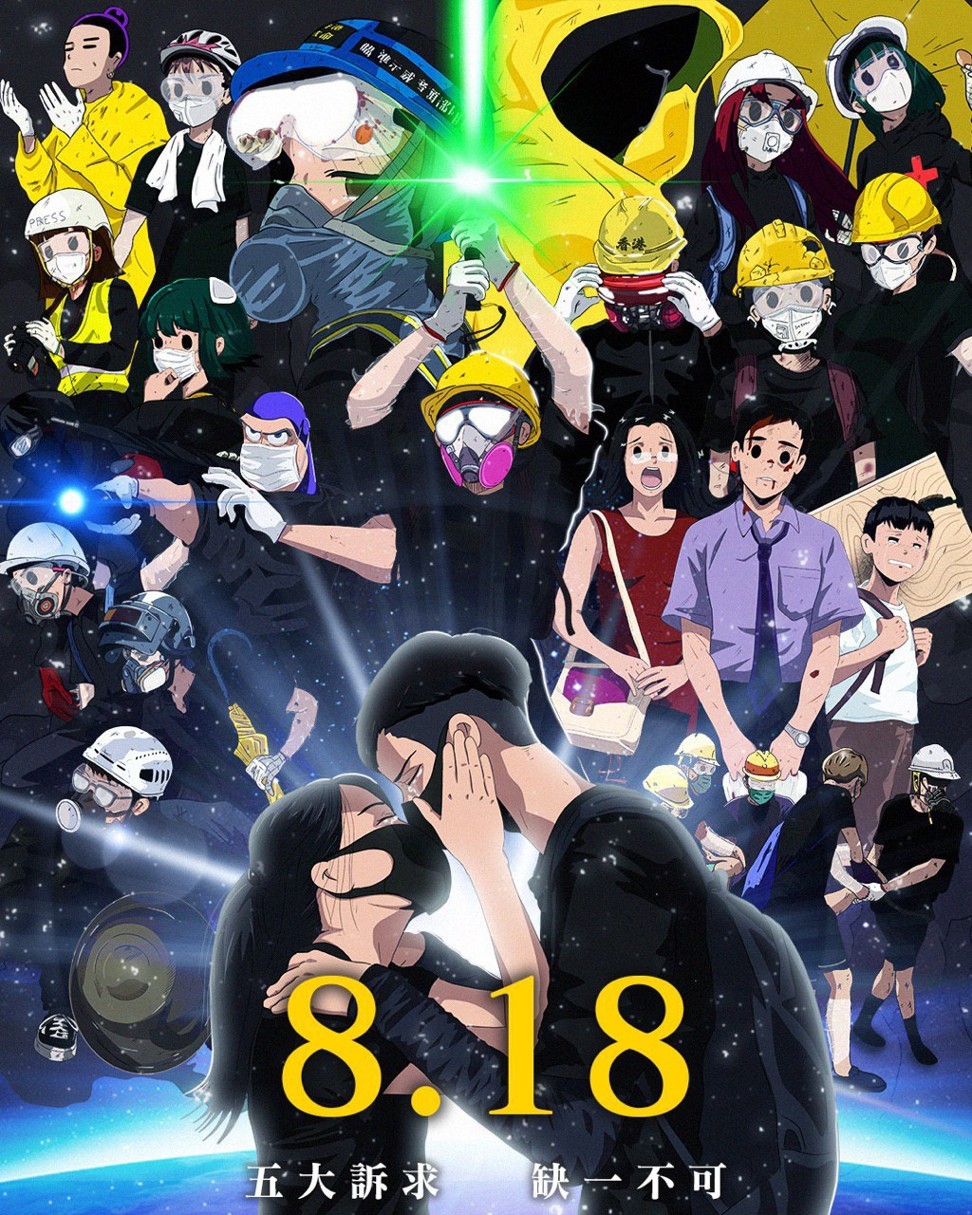
A Star Wars-themed poster.
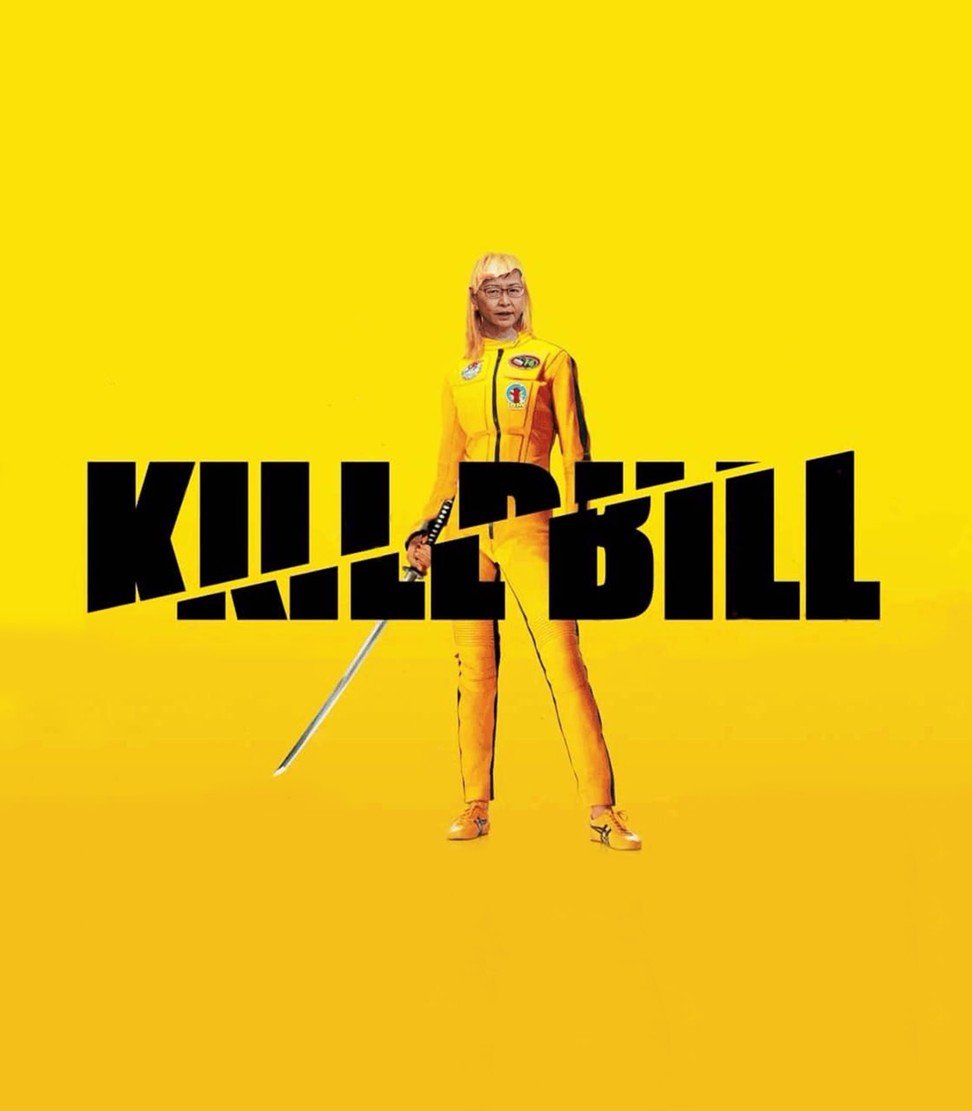
Quentin Tarantino’s Kill Bill series of films inspired this witty poster that replaces Uma Thurman with Carrie Lam.
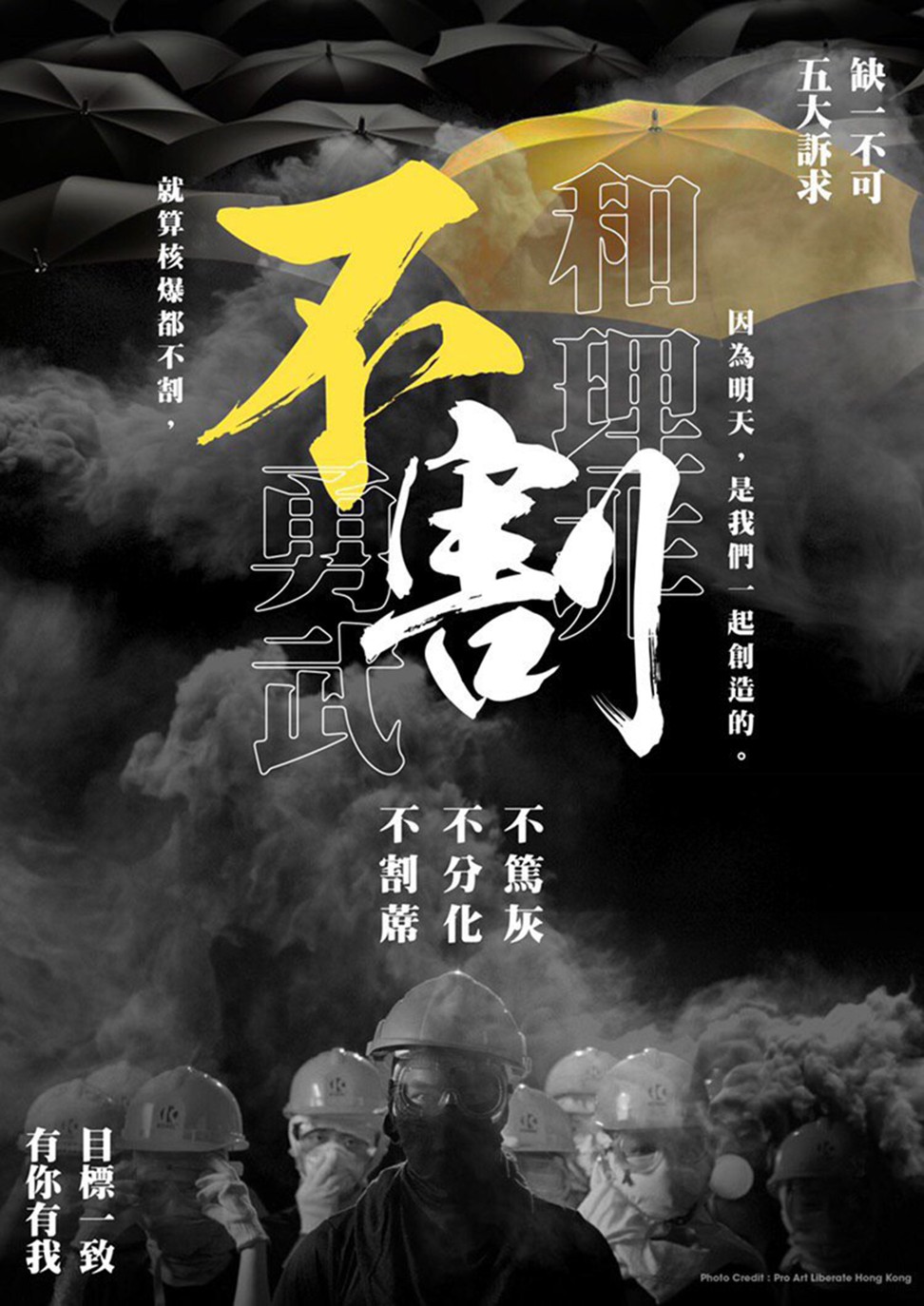
A poster urging unity that says, ‘we create tomorrow together’.
“For many of us, our commitment to our society, to this movement, has taken priority over our time, health, studies and work – even our lives.”

A poster advertises a rally at the airport, after a female protester was seriously injured after being hit in the eye by a police beanbag round.

Illustrator Katrina’s take on the view that it’s OK to protest, but only if you don’t disturb others.

A Star Wars-themed poster.

Quentin Tarantino’s Kill Bill series of films inspired this witty poster that replaces Uma Thurman with Carrie Lam.

A poster urging unity that says, ‘we create tomorrow together’.

Aucun commentaire:
Enregistrer un commentaire